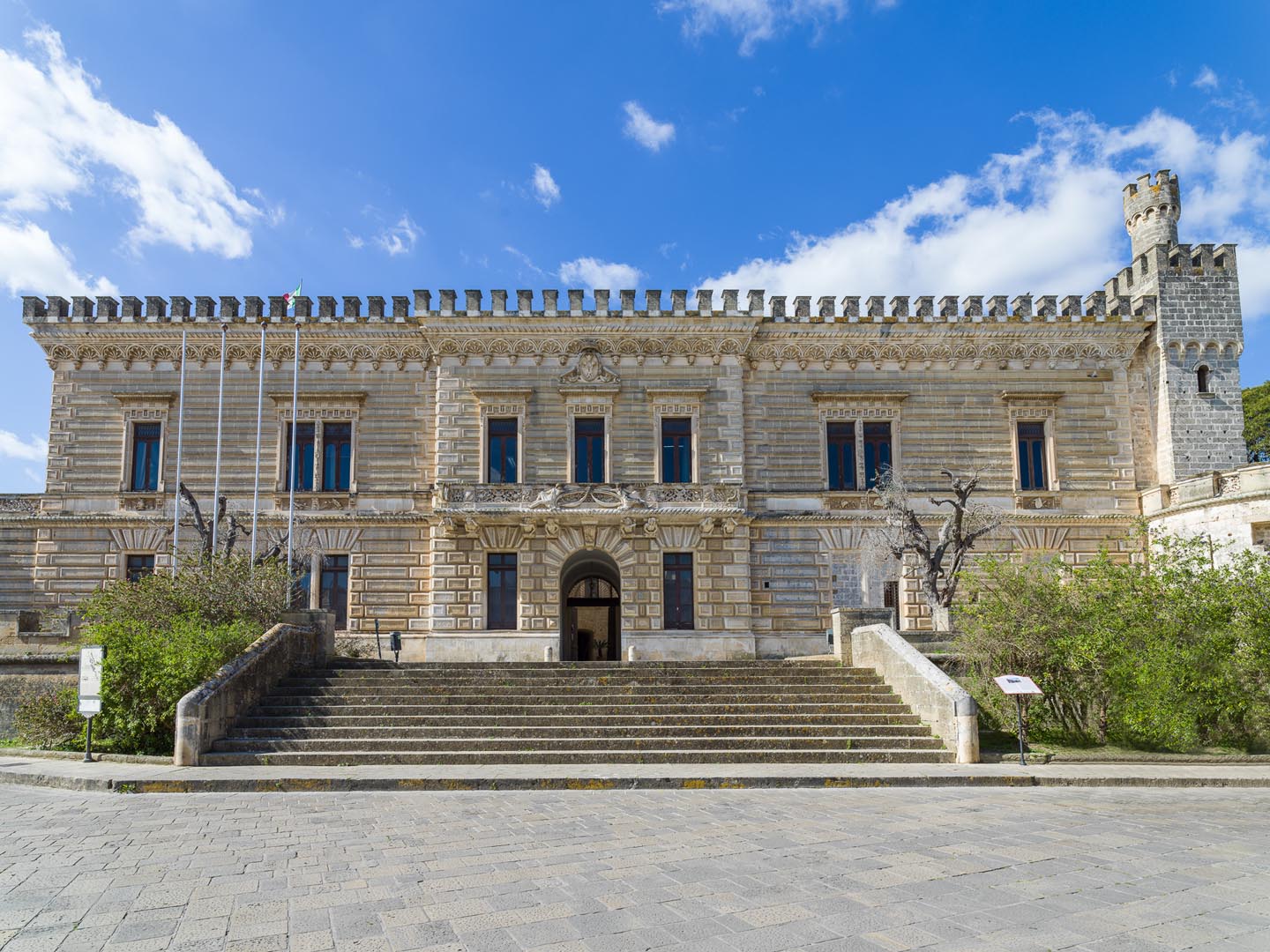Around the end of the 19th century and the early years of the 20th, the city of Nardò also experienced the period of great positivity and prosperity known in Europe as the “Belle Epoque”. Palaces, villas and public monuments were built in the city, in particular the Municipal Theatre, a place of leisure.
The itinerary allows you to get to know the "genius loci", i.e. the art and taste of the period and the skill of the local craftsmen. It starts in the town centre and moves towards the marinas.
On the edge of the old town centre is the Aragonese Castle, which was renovated and converted into an aristocratic residence by the Personè Barons. In the early years of the 20th century, the Barons built some of the most interesting villas in the area. The Castle has an eclectic façade. The adjacent garden is still a romantic oasis of peace where you can relax mind and body, rich in rare trees and exotic plants and don’t miss the ‘Small temple ground’, piece of art of the well-known ‘Paladini Company of S. Pietro in Lama’. The beautiful magnolias in Diaz Square invite you to walk along the tree-lined avenues of the ancient walls, characterized by art nouveau and neoclassical buildings.
In historic centre, there are many 20th - century buildings and palaces with portals and façades in baroque style. When you arrive in the ancient Piazza delle Legne, now called Piazza Salandra, we suggest a stop at the historic Cafe Parisi, a meeting place for intellectuals and artists of the time. A few steps away is the municipal Theatre built by the engineer Quintino Tarantino. By car, but preferably by bike or on foot, you can reach the town of Cenate in less than 5 km, where we will find the beautiful eclectic villas.
Half or full day itinerary
Points of interest: Castle, Historical Botanical Garden, palaces and buildings in the old town and along the walls, Municipal Theatre, suburban villas in the Pagani and Cenate areas.


